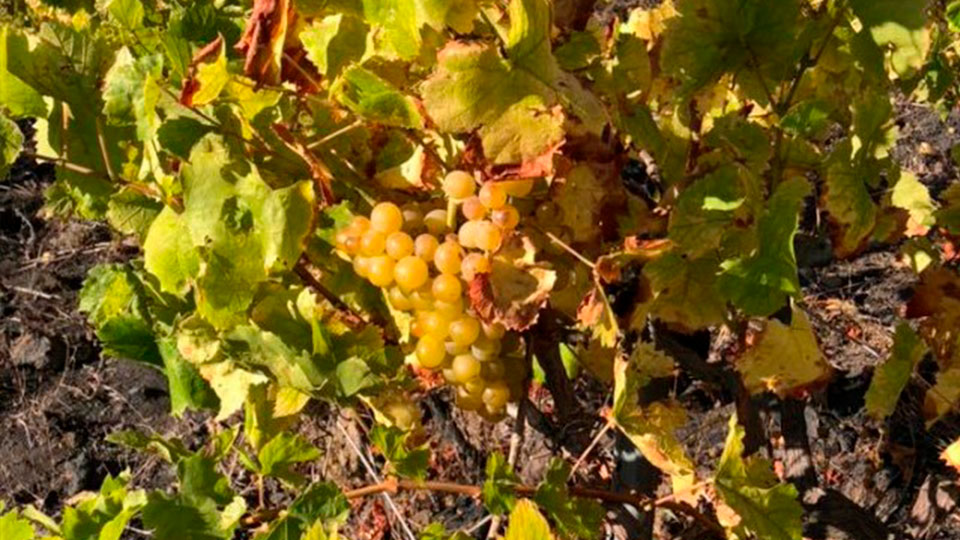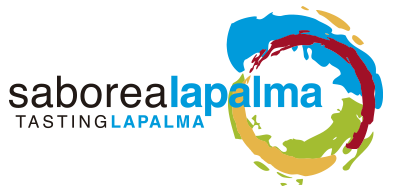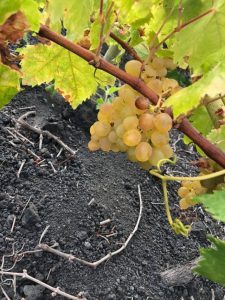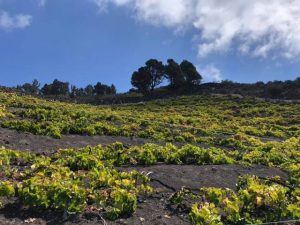
24 Nov Bujariego grape cultivation on the Cumbre Vieja volcano
On the volcano "Cumbre Vieja", especially in Fuencaliente de La Palma, the Bujariego variety has been cultivated for the last centuries, as it is called in La Palma to the cultivar Vijariego blanco, Diego, Vigiriega or any other of the fourteen synonyms registered in the Vitis variety catalogues. Usually at a higher altitude than others, such as the more famous Malvasía aromática.
One of the best descriptions I have found of the plant is on the following website: vitiscanarias.com. Also interesting are the observations made around 1800, as well as the studies published from other latitudes, such as Andalusia, from where it almost certainly reached the Canary Islands.
Nowadays it is cultivated in many of the islands, under different names, at different altitudes, but almost always outside the most humid and rainy wine-growing areas, rather on sunnier leeward slopes. In Fuencaliente it is found even in the highest plots at an altitude of about 1000 metres, like some plots in Gran Canaria, and in the foothills of Granada some plots exceed this altitude.
On these palm-covered slopes, covered with recent pyroclasts, volcanic ash or 'granson', the shoots were planted a few centuries ago directly in holes or trenches to reach the lower, older and more fertile levels of the soil, where the 'granson' will maintain the humidity. Traditionally, the trunk is dug periodically to weed and remove shoots below the surface of the soil, which are frequent in this free-standing cultivar. Plants are spaced widely apart, six square metres per plant, up to ten, in dry conditions, rainfall of less than 300 mm is common in dry years.
It is still pruned between February and March, there is no hurry, it "bursts" late, it sprouts weeks after the Listán Blanco and Negramoll, some copper product in case of late rains in April or May, and several coats of sulphur powder until the summer, it is quite sensitive to "oidium", with the high humidity of the "balconies" facing the ocean where they are grown, between 500 and 1000 metres above sea level, but only four or five kilometres from the coast. Mist is common in any month of the year, albeit temperate, which is ideal for the fungus. The higher the altitude, the less fungal problems in spring, due to the cold at night, and the cycle from sprouting to harvest is also delayed.
The plants are trained in a creeping fashion, the bunches are medium-sized, the berries are very large, but the skin is thick, delicate in the early stages to sunburn, so they need to be shaded, protected from the wind, separated from the ground but close to it, for better ripening, all by hand, with forks or stones.
If all went well, after enduring some mist and a few days of Saharan storms, with dry, almost hurricane-force winds, they will have ripened and will be almost perfect for the pests of vertebrates to start eating, lizards, partridges and other birds will eat some of the grapes, aggravated by the fact that, being somewhat later, they remain in the field a little longer than other varieties.
Very low yields measured by kilos not by tons, very small plots measured by square metres not by hectares, slopes of more than 50%, volcanic ash, impossible to mechanise, from which unique products are obtained.
In the winery, grapes with a lot of pulp, cloying as mentioned in some publications, maintaining high acidity, very rich in malic acid compared to other varieties around it. Macerating, pressing, racking, fermenting in a spontaneous and not very controlled way, racking and waiting, is the process that is carried out in the microbodega that bottles this wine, with the brand name lacasadelvolcan.es and which is the house wine of the annexed restaurant, it is labelled with the Denomination of Origin "La Palma". The wine on the vine has very interesting fruity aromas, with time the malolactic fermentation takes place, in a white wine, it becomes rounder, the bitterness is accentuated and it becomes complex, more unctuous and interesting.
With more controlled production, we find single-varietal wines in Tenerife, from Viñátigo and El Sitio, in Gran Canaria, Volcán, in Lanzarote from various wineries such as El Grifo, Bermejo, Vulcano and Tisalaya.
Cheers from the "Cubre vieja" volcano!
Source: https://www.vinetur.com/




